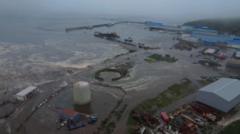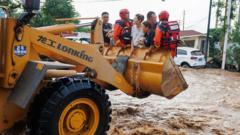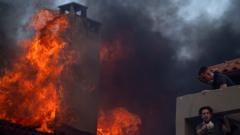Thousands of residents evacuated as wildfires in Canada devastate communities, intensifying health concerns from smoke spreading to the US Midwest.
Wildfires Rage in Canadian Prairies: What You Need to Know

Wildfires Rage in Canadian Prairies: What You Need to Know
Smoke from raging wildfires in Manitoba and Saskatchewan affects air quality in nearby US states.
Thousands of residents have been forced to evacuate in Saskatchewan and Manitoba due to raging wildfires that have led officials to declare a state of emergency. With fire crews struggling to manage numerous out-of-control blazes, the smoke is expected to drift into parts of the Midwest in the coming days, impacting air quality across Michigan, Wisconsin, and Minnesota, as alerted by Minnesota's Pollution Control Agency.
The wildfires have already burned through approximately 1.7 million acres, predominantly in northern regions of Saskatchewan and along the northwest border of Manitoba. Tragically, reports confirm that two lives have been lost in the small Manitoba town that witnessed destructive flames engulfing it.
Around 17,000 people are currently under evacuation orders, with more communities likely to follow as conditions worsen. Wab Kinew, the premier of Manitoba, has stated that the evacuations, particularly from rural areas and First Nations reserves, necessitate the involvement of the Canadian armed forces to ensure safety for those affected. Emergency centers have been established; one currently serves evacuees in Winnipeg, where many are seeking refuge from the smoke and chaos.
As the wildfire season typically lasts from March to October in Canada, officials anticipate rising challenges in managing these uncontrollable flames and their associated environmental effects. Local authorities urge residents to stay informed and prioritize their safety as the situation unfolds.




















